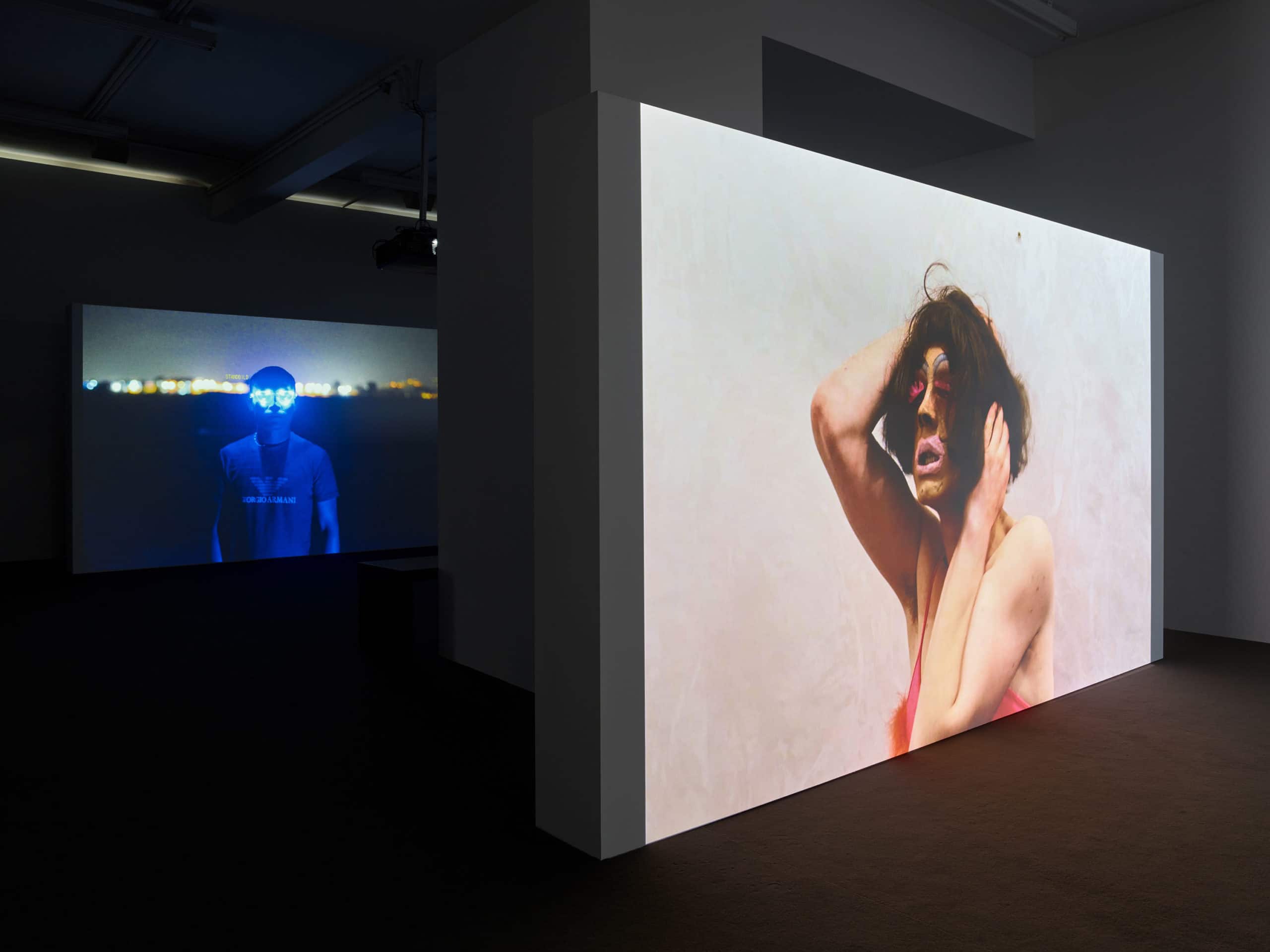
JSC Berlin. Photo by Robert Hamacher. Courtesy of Julia Stoschek Collection.
Time-based arts with the video, in particular, are perhaps the medium best suited for the online realm. The collection of Julia Stoschek, a nonpareil among media art collectors, is going to be continually uploaded and made accessible online for free over the next months. The expansive collection spans film, video, sound, performance, together with computer and software-based works to offer a comprehensive overview of the uneasy yet fascinating hinterland between cinematic film and visual art from the 1960s to today.
Starting in 2002, The Julia Stoschek Collection has grown to include over 860 artworks done by more than 282 artists, including names such as Barbara Hammer, Peter Fischli & David Weiss, and Derek Jarman. Some works are on display in the two exhibition spaces in Berlin (JSC Berlin, since 2016) and Düsseldorf (JSC Düsseldorf, since 2007). Although a small part has already been uploaded – some of the older works need to be digitised firstly – what we can access sums now up to 15 hours of video material.
New items are added on a weekly basis; to date The Julia Stoschek Collection has enabled free access to several holdings in their entirety: by Basel Abbas & Ruanne Abou-Rahme, John Bock, Johanna Billing, Monica Bonvicini, Keren Cytter, Jen Denike, Nathalie Djurberg & Hans Berg, Loretta Fahrenholz, Cao Fei, Peter Fischli & David Weiss, Kate Gilmore, Manuel Graf, Barbara Hammer, Christian Jankowski, Jesper Just, Helen Marten, Lutz Mommartz, Elizabeth Price, Jon Rafman, Britta Thie, Wolfgang Tillmans, Wangshui, Andro Wekua, and Tobias Zielony. Having the whole collection available online is a long-term goal as the collector promises. A maximum of 15% of the holdings can be displayed at the same time in the two physical locations. Hence an expansion online seems a natural move. ‘Art is meant to be seen’ says the owner and collector Julia Stoschek.
There is magic in the video; it splits and folds memories, scenes and experiences into strands of images which, when unfolded, give the impression of temporality and live action. In ‘Magic Mountain’, Thomas Mann spoke fascinatedly of actors whose actions were ‘split up into millions of pictures’ in order to be given ‘back to the present’ whenever ‘reeled off again at will’. However, the continuity of the flow of time seems distorted in Julia Stoschek’s two works of the duo Peter Fischli & David Weiss, known for their earlier farcical domino-like chain reaction ‘The Way Things Go’ (1987).

Peter Fischli & David Weiss, ‘Büsi’, 2001. Courtesy of the artists
In Fischli & Weiss’ ‘Büsi’ (2001) and ‘Hunde’ (2003), same scenes and shots recur; we can no longer be sure of any action’s actuality. The former is a 6-minutes long video of a cat drinking milk from a bowl that is never emptied; the thirsty canines of the latter stare through a fence looking out for – we don’t know what or whom – with a shiver that recalls a somewhat existentialist dread.
The collection describes the domain it is devoted to, time-based art, as an art that unfolds through time. Duration is a dimension also of Wolfgang Tillmans’ ‘Heartbit/Armpit’, where the most basic sign of life can be detected only by observing minute changes in a young man’s bare chest. Only the minimal movements which presence unfolds in time can attest to the fact that the actor is alive.

Wolfgang Tillmans, ‘Heartbeat/Armpit’, 2003. Courtesy of the artist.
The new generation – the collection highlights Ed Atkins, Loretta Fahrenholz, Cyprien Gaillard, Josh Kline, Jon Rafman, Rachel Rose, Mika Rottenberg, Anicka Yi, and Tobias Zielony – does not shy away from reminding us of the emancipatory power of art. Zielony’s ‘The Street’ (2013) animates photographs of Bangladeshi youths in Italy. Zielony follows them along Via Sant’Alessio, a street that links the refugee camp with downtown Rome.

On the left: Tobias Zielony, ‘The Street (C.P.A.)’, 2013, when back on display in JSC
Düsseldorf.
Additionally, Julia Stoschek uploads weekly videos in a format called ‘Julia’s Most Wanted’, where she personally introduces one of the new featured works – added to the Collection’s Instagram profile. The Julia Stoschek Collection aims at diversity hence the artist base is international, yet so far the only Polish accent is a recent collaboration series of Dorota Gawęda and Eglė Kulbokaitė – as of June 9th, yet to be uploaded online.
Written by Franciszek Bryk
Edited by Contemporary Lynx team







